A major survey of practices in the Australian grape and wine industry is being launched today by the Australian Wine Research Institute. The survey seeks to determine how common a range of different production practices are across the industry, with results to be used to inform grape and wine research, development and extension activities. It will pose questions on areas including pruning, spraying, harvesting, fermentation, stabilisation, and packaging.
The Australian Wine Research Institute Blog
AWRI Board election now open
31 August 2016 >An election is currently being held for the vacant position on the AWRI Board of Directors in the small producer category (<2,000 tonnes).
Five nominations were received in the small category:
Drinking in the science
5 August 2016 >Wine lovers will learn more about their favourite drop from scientists at The Australian Wine Research Institute (AWRI) in an evening of wine tasting and science on 16 August in Adelaide. For more than 60 years the AWRI has provided scientific research and support for the Australian wine industry. This event will give AWRI scientists a new opportunity to share their findings with wine consumers.
AWRI webinar series 2016
3 August 2016 >The AWRI webinar series for 2016-17 starts on 18 August. A series of 20 webinars will be presented between now and May 2017, covering a wide range of winemaking and viticulture topics. Each webinar consists of a presentation followed by a Q&A session and is held at 11:30 am Australian Central Time (Adelaide, GMT+9:30), usually on a Thursday. All AWRI webinars are free to attend.
The first four webinars will be:
18 August 2016: Luxury wine – Gregoire Patacq, AWRI
25 August 2016: Impact of pruning time and temperature on wine attributes – Martin Moran, SARDI
1 September 2016: Stuck ferments – what can you do? – Adrian Coulter, AWRI
8 September 2016: Practical implementation of precision viticulture in vineyards – Colin Hinze, Taylors Wines
Register now or find out more at: http://www.awri.com.au/industry_support/courses-seminars-workshops/webinars/.
Registration confirmation
After registering for a webinar, you will receive a confirmation email with a link to join the session.
System requirements
You will need a computer with an internet connection. Participants can dial in via phone using the provided number or audio can be connected over the internet using the computer’s microphone and speakers (voice over internet protocol – VOIP). A headset is highly recommended.
Questions or help needed? Please contact infoservices@awri.com.au or phone 08 8313 6600.
AWRI researchers win award for work on anthocyanins and human health
18 July 2016 >The Australian Wine Research Institute (AWRI) this morning received a Tanner Award for the most-cited paper published in the journal Comprehensive Reviews in Food Science and Food Safety in 2013.
eNews – July 2016
11 July 2016 >Balancing black pepper flavour and phenolic richness in red wine
New projects on digital viticulture and smoke taint
Nominations open for AWRI Board positions
Entwine Australia – 2016/17 membership now open
Optimising MLF and avoiding spoilage
AWITC workshops – from vineyard management to packaging impacts
Order the latest AWRI staff publications online
Balancing black pepper flavour and phenolic richness in red wine |
|
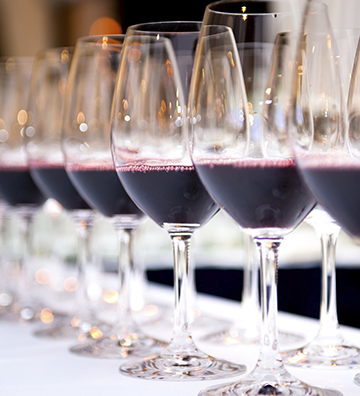 |
Water deficit during ripening increases the concentration of anthocyanins and tannins in red wines but irrigation can enhance rotundone, the aroma compound responsible for black pepper flavour in red wines. The dilemma of wanting both phenolic richness and higher rotundone can be overcome by using a cane-cutting technique in the vineyard.
Results from this and other rotundone-related research will be presented in AWITC workshop W30 ‘Spicing up your world: black pepper flavour in wines’ in Adelaide on Wednesday 27 July. Attendees will taste peppery varieties of wines from across the world (including France, Italy, Spain, New Zealand and Japan) and hear the latest research on practical ways to influence rotundone in the vineyard and winery. On-vine drying with cutting of the fruit-bearing cane two to three weeks prior to harvest was found to have a limited impact on rotundone level in wine. However, when irrigation was combined with the cane-cutting technique, significant gains were seen in rotundone levels, anthocyanins and total phenolic index in wine, and in skin to juice ratio. The full paper detailing these results is accessible via the AWRI library: Geffroy, O., Siebert, T., Herderich, M., Mille, B., Serrano, E. 2016. On-vine grape drying combined with irrigation allows to produce red wines with enhanced phenolic and rotundone concentrations. Scientia Horticulturae. doi 10.1016/j.scienta.2016.05.031. To register for the black pepper workshop, visit the AWITC registration page now or contact the conference office on info@awitc.com.au or 08 8313 6821. |
New projects on digital viticulture and smoke taint |
|
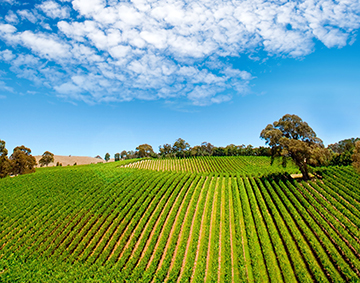 |
Deputy Prime Minister the Hon. Barnaby Joyce recently announced a range of new projects funded by the Australian Government under the Rural R&D for Profit Programme. The AWRI is a partner in two of these projects, which will be administered by Wine Australia: ‘Digital technologies for dynamic management of disease, stress and yield’ and ‘Mitigation of climate change impacts on the national wine industry by reduction in losses from controlled burns and wildfires and improvement in public land management’.
As part of the digital viticulture project the AWRI will collaborate with Accolade Wines to develop spectral methods to measure the degree of fungal rots and other contaminants in grape loads delivered to the winery and evaluate options to apply these techniques at the weighbridge in real-time. The smoke-related project involves collaboration with Agriculture Victoria and LaTrobe University, and has aims that include:
|
Nominations open for AWRI Board positionsNominations are sought for three Levy Payer-elected Director positions on the AWRI Board, which will become vacant on 31 December 2016. The AWRI’s Constitution provides that there will be not less than seven nor more than 11 Directors. Six of those directors are nominated and/or elected by organisations that pay the Wine Grapes Levy. Nominations close on Friday, 5 August 2016 at 5:00 pm. Levy payers in the small (<2,000 tonnes), medium (2,001-50,000 tonnes) and large (50,001+ tonnes) producer categories are called on to nominate suitably qualified candidates for the vacant positions. This is an excellent opportunity to become involved in the Australian wine industry’s own R&D organisation and provide a ‘coalface’ perspective to the direction and priorities of the AWRI’s research, development, extension and commercialisation activities. In the event that more than one nomination is received for a particular category, an election will be held. Levy payers in that particular category will have the opportunity to vote for their preferred candidate. If an election is necessary, it will be held in August/September 2016 and further information will be published at the time. Successful candidates will take office on 1 January 2017 for a term of three years. All Wine Grapes Levy payers will be sent an explanatory letter and nomination form in the week beginning 11 July 2016. Nominations close on Friday, 5 August 2016 at 5:00 pm. Nomination forms and further information on the AWRI Board and the nomination/election process can be found on the AWRI website. |
|
Capturing the luxury market |
|
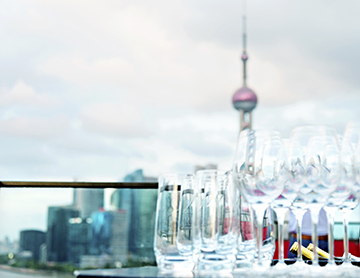 |
Did you know that Australia represented the strongest growth market for Porsche worldwide in the past two years, exceeding China and other emerging markets? A critical element to capturing this luxury market, both in Australia and in the substantial Asian markets, is an understanding of the true motivations behind consumer purchasing decisions and appropriate product symbology.A new workshop, ‘Creating product premiums using luxury and design thinking business strategies’, to be held at the AWITC in Adelaide on Sunday 24 July, provides an opportunity to explore this exciting area. The workshop, convened by Vince O’Brien, will feature a unique series of internationally renowned speakers sharing their knowledge on the luxury market opportunity, elucidating the consumer needs that drive purchasing behaviours and harnessing emotive appeal to develop product premiums.
Speakers include:
To register, visit the AWITC website or contact the conference office on info@awitc.com.au or 08 8313 6821. |
Entwine Australia – 2016/17 membership now open |
|
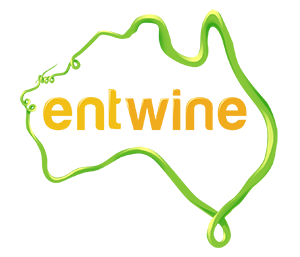 |
Entwine Australia membership is now open for 2016/17. Entwine currently has more than 600 members across Australia who annually benchmark their sustainability performance to identify opportunities for improvement and to save money. This year, vineyard members are also able to complete a self-assessment of their vineyard practices and access additional resources through Entwine. New members are always welcome! To get a feel for Entwine and the reports available to members, a free updated version of the Australian Wine Carbon Calculator is now available, along with an updated user manual. For more information, visit the AWRI website and join online.
The AWRI Extension and Outreach team has almost completed its national workshop tour, ‘Opportunities in a new climate’. One of the final opportunities to attend these free workshops will be on Sunday 24 July at the 16th Australian Wine Industry Technical Conference (AWITC). The workshop will bring together speakers from across Australia to discuss the wine industry’s environmental credentials, how Australia fares against international competitors and will also present the new Entwine case studies. If you or anyone from your region or business is attending the AWITC and has not seen the new features of Entwine, encourage them to register for the workshop. |
Optimising MLF and avoiding spoilageMalolactic fermentation is a key step in the production of many wines, but can also be a high risk time in a wine’s life due to long periods of time with low levels of SO2. The AWRI helpdesk has recently developed two new fact sheets that bring together information to help winemakers maximise their chances of a successful MLF and avoid spoilage. The first factsheet ‘Achieving successful malolactic fermentation’ provides practical information on how to inoculate, conduct and monitor MLF and the optimal wine conditions for a successful outcome. The second fact sheet ‘Avoiding spoilage by lactic acid bacteria’ addresses spoilage issues caused by the different types of lactic acid bacteria, with details of the sensory characters they can cause and advice on preventing this type of spoilage. For more information on successful MLF or avoiding LAB spoilage, contact the AWRI helpdesk on 08 8313 6600 or helpdesk@awri.com.au. |
|
AWITC workshops – from vineyard management to packaging impacts |
|
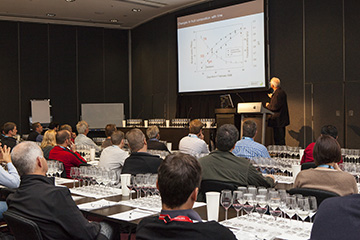 |
AWRI staff are convening 16 workshops at this year’s AWITC, as well as coordinating the overall workshop program. AWRI workshops cover a wide range of research areas and activities including wine flavour, wine yeast and bacteria, consumer insights, managing vineyards to adapt to climate change, lees handling and wine clarification. Workshops will present unique opportunities to taste research-related wines, hear from local and international experts and ask questions in a smaller group format than the plenary sessions. Visit the AWITC website to see full details of the workshop program and to buy workshop tickets. This year’s workshops have been scheduled for Sunday 24 July and the morning of Wednesday 27 July to avoid any overlap with the plenary sessions.
The workshops convened or co-convened by AWRI staff are: W01 Consumer insights in China (Patricia Williamson) |
What’s new in eBooks?Ten new eBooks have recently been added to the AWRI’s collection, with topics covering social media strategies in the wine industry, sustainability, consumer preference, South African and Italian wine regions and managing quality.To keep in touch with the eBook collection and review the latest books, visit the New eBooks page on the AWRI website. Not sure how to go about reading an eBook? Check out this this webinar or contact the AWRI Information Services team (infoservices@awri.com.au). |
|
Order the latest AWRI staff publications onlineAccessing the latest AWRI publications is easy. Visit the AWRI Publications web page to:
A full list of AWRI publications published since the last eNews is included below: 1822 Petrie, P., Sadras, V. Quantifying the advancement and compression of vintage. Aust. N.Z. Grapegrower Winemaker (628): 40-41; 2016. 1823 Essling, M. Ask the AWRI: Grazing sheep in vineyards. Aust. N.Z. Grapegrower Winemaker (628): 46-47; 2016. 1824 Wilkes, E., Day, M., Herderich, M., Johnson, D. In vino veritas – investigating technologies to fight wine fraud. Wine Vitic. J. 31 (2): 36-38; 2016. 1825 Boban, M., Stockley, C., Teissedre, P.-L., Restani, P., Fradera, U., Stein-Hammer C., Ruf, J. Drinking pattern of wine and effects on human health: why should we drink moderately and with meals? Food Funct. DOI: 10.1039/C6FO00218H; 2016. 1826 Geffroy, O., Siebert, T., Herderich, M., Mille, B., Serrano, E. On-vine grape drying combined with irrigation allows to produce red wines with enhanced phenolic and rotundone concentrations. Sci. Hortic. 207: 208-217; 2016. 1827 Wilkes, E., Warner, L. Sugar analysis – too many choices? Wine Vitic. J. 31 (3): 68-72; 2016. 1828 Borneman, A., Chambers, P., Schmidt, S., Forgan, A., Kolouchova, R., Herderich, M., Johnson, D. Wine yeast: where are they from and where are we taking them? Wine Vitic. J. 31 (3): 47-49; 2016. 1829 Godden, P. Documenting 30 years of technological change in the Australian wine industry. Wine Vitic. J. 31 (3): 11-16; 2016. 1830 Dry, P. Montepulciano. Wine Vitic. J. 31 (3): p. 61; 2016. 1831 Longbottom, M. Excitement ahead of the Australian Wine Industry Technical Conference. Wine Vitic. J. 31 (3): p. 11; 2016. 1832 Wilkes, E., Day, M., Herderich, M. Johnson, D. In vino veritas – investigating technologies to fight wine fraud. Wine Vitic. J. 31 (2): 36-38; 2016. 1833 Dry, P. Assyrtiko. Wine Vitic. J. 31 (2): p. 55; 2016. 1834 Sternes, P.R., Borneman, A.R. Consensus pan-genome assembly of the specialised wine bacterium Oenococcus oeni. BMC Genom. 17 (308): 15 p.; 2016. 1835 Johnson, D. See you in July. Aust. N.Z. Grapegrower Winemaker (629): p. 20; 2016. 1836 Coulter, A. Ask the AWRI: KHT deposits and cold stability. Aust. N.Z. Grapegrower Winemaker (629): p. 76; 2016. 1837 Nordestgaard, S. Five-yearly AWRI Technical Survey to track changes in practices. Aust. N.Z. Grapegrower Winemaker (629): p. 81; 2016. |
|
AcknowledgementThe AWRI acknowledges support from Australia’s grapegrowers and winemakers through their investment body, Wine Australia, with matching funds from the Australian Government. The AWRI is a member of the Wine Innovation Cluster in Adelaide, South Australia. |
|
Toasting three terrific tasters
24 June 2016 >The Australian Wine Research Institute (AWRI) announced today the winners of the dux of three recent Advanced Wine Assessment Courses (AWACs). Mr Tim Perrin, Winemaker, Oakridge Wines, was named dux of AWAC 36, Mr Tim Bourne, Assistant Winemaker, Sons of Eden, was named dux of AWAC 37 and Ms Stephanie Dutton, Winemaker, Penfolds, was named dux of AWAC 38.
Agrochemical update June 2016: new ‘Dog book’ available
22 June 2016 >The 2016/17 edition of Agrochemicals registered for use in Australian viticulture (the 'Dog book') is now available. The updated ‘Dog book’ can be viewed via the online pdf or mobile app. A hard copy will be distributed to levy payers by mail and will also be included with the next issue of Australian & New Zealand Grapegrower & Winemaker.
This agrochemical update summarises the major changes compared with the previous version.
Re-entry periods
To raise awareness of the label-mandated directions concerning re-entry into vineyards after spraying, the following advice is now provided (page 22).
- The re-entry period is the minimum amount of time that must pass between when an agrochemical is applied to an area and when that area can be entered without protective clothing and equipment.
- Re-entry periods are set to protect people from exposure to agrochemicals that can occur by inhalation or skin contact if they enter an area without proper protective equipment.
- The agrochemical label provides information on the re-entry period and any protective clothing or equipment that must be used if the re-entry period is not met. Different products from the same activity group may have different re-entry requirements. The advice provided in these tables is the most stringent re-entry period for the active constituent.
- Where the re-entry period specifies a range of days, the shorter period relates to low exposure activities and the longer period to higher exposure activities. Check the label for details.
A key to the re-entry requirements for specific active constituents has been included as a new column in the list of registered products (pages 15-21) with the guidelines summarised on page 22.
The applicability of the 'Recommendations' to your business
The following statement has been emphasised on page 3 in the 2016/17 edition to raise awareness that the 'Recommendations'; aim to meet the strictest maximum residue limit (MRL) of all key export markets. For businesses that know the markets their products are going to be sold into, there may be less stringent guidelines that can be followed. The AWRI can be contacted for advice.
- These recommendations have been developed as a general guide and assume that the wine will be sent to a range of overseas markets, each with differing MRLs. If you only sell wine in Australia, or to only a few countries, contact the AWRI to discuss how the recommendations might differ. The AWRI can also provide advice regarding the persistence of a chemical on grapes or through winemaking, and MRLs for most major export destinations.
New active constituents
The Australian Pesticides and Veterinary Medicines Authority (APVMA) has approved the use of the following active constituents in wine-grape production.
FENPYRAZAMINE
APVMA 68251
Prolectus is registered for control of botrytis (Botrytis cinerea). Prolectus is a Sumitomo Chemical Australia product. The label withholding period (WHP) is DO NOT apply after E-L 31. Recommended restriction on use for grapes destined for export wine: Use no later than E-L 25, 80% capfall.
FLUMIOXAZIN
APVMA 80647
Chateau is registered for the control of various grass and broadleaf weeds under grapevines. Chateau is a Sumitomo Chemical Australia product. The label recommends the product be used between the post-harvest period and budbreak.
Active constituents removed
The following active constituents have been removed from the 'Dog book' because they are either no longer registered with the APVMA for use in viticulture or are no longer available.
AZINPHOS-METHYL
Activity group 1B insecticide registered for elephant weevil, fig longicorn, grapevine hawk moth, grapevine scale and light brown apple moth.
FENAMIPHOS
Activity group 1B insecticide previously registered for nematodes.
FENARIMOL
Activity group 3 fungicide previously registered for powdery mildew. Changes to Dog book 'Recommendations'
CAPTAN
The European Union notification of a change to the maximum residue level (MRL) and residue definition for the fungicide captan has meant that captan is not recommended for use on grapes destined for export wines. Contact your winery or grape purchaser prior to any application of captan.
For more information or to request a copy of the new 'Dog book', please contact Marcel Essling on 08 8313 6600 or email helpdesk@awri.com.au.
This information is provided to inform the Australian grape and wine sector and should not be interpreted as an endorsement of any product.
Technical Review June 2016 issue available online
9 June 2016 >The June 2016 issue of Technical Review is now available online. Articles and abstracts can be viewed individually, or the full issue can be downloaded. The online format of Technical Review allows you to browse the list of the latest articles on grape and wine production by keyword, view article summaries and order journal articles from the AWRI Library.
For copyright reasons, access to abstracts is available only to Australian winemakers and grapegrowers who pay the Wine Grapes or Grape Research levies. The technical notes authored by the AWRI are, however, freely available. If you have forgotten your password for the AWRI website, please use the forgotten password link to reset your password.
Below is a snapshot of what’s in this issue:
| AWRI Technical Notes | |
| AWRI publications |
|
| Current literature – oenology |
|
| Current literature – viticulture |
|
Help turn your agricultural waste into profit
24 May 2016 >SARDI and the Australian Wine Research Institute are conducting the Transforming Food Loss and Industry Waste into Profit Project.
This project is funded under the Industry-led Research Sub-Program (IRSP), which is part of the Regional Economic Development element of the $265 million South Australian River Murray Sustainability Program (SARMS). SARMS is funded by the Australian Government and delivered by Primary Industries and Regions SA, on behalf of the State Government.
Project participants include:
- Potatoes South Australia
- Treasury Wine Estates
- Accolade Wines
- S. Smith & Son (Oxford Landing Estates)
- Pernod Ricard Winemakers
- Citrus Australia – SA Region
- Horticulture Innovation Australia Ltd
- Regional Development Australia – Murraylands and Riverland.
The 14 month project aims to map agricultural and processing food loss and industry waste throughout the Riverland, Murraylands, and Murray Mallee area, assess actual or potential waste transformation infrastructure in the region, and determine what valuable food and wine bioactives and industry waste can be turned into higher value-added products and/or bioenergy. It is intended that the project will lead to new business and product development opportunities, will further support the regions environmental credentials, and will enhance regional capabilities, investment and employment.
For the project to be successful we need your help. If you are a food or wine primary producer, processor (including food packer, manufacturer or winery) or industry support provider in the SARMS focus area please take a minute to complete the relevant survey. For some vertically integrated companies this may involve all three surveys, although different company representatives may be responsible for each survey.
All completed surveys (where contact details are provided) will go into a draw for a new 32gb iPad Pro valued at $800, thanks to AWRI.
Go to the survey for your industry:
For more information on the project please contact Dr Steve Lapidge, SARDI Director of Science Partnerships, steven.lapidge@sa.gov.au or on 0401 990 367.

